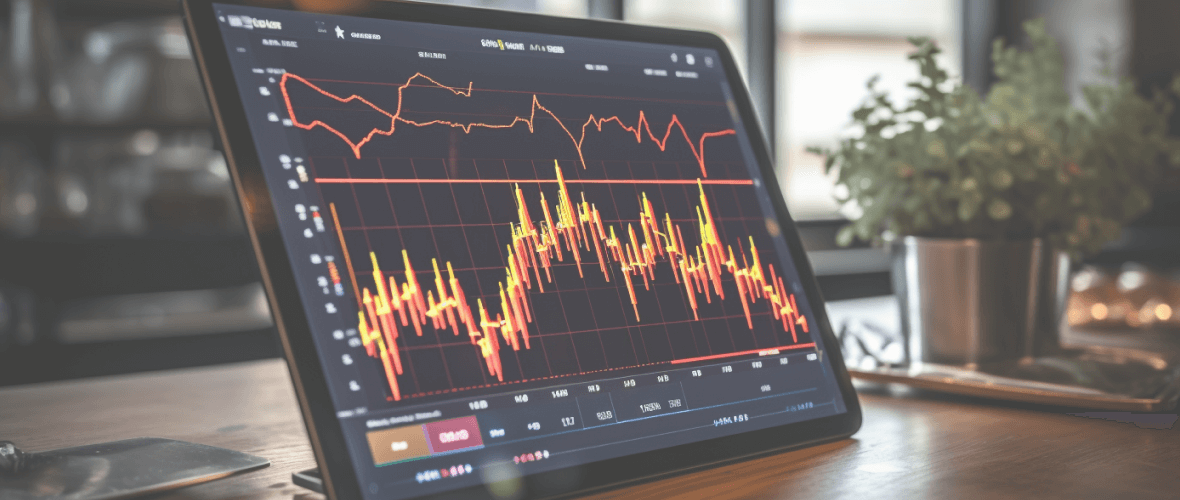Crypto market cycles, much like the tides, ebb and flow, present unique challenges and opportunities for investors. These cycles, characterised by periods of rapid growth (bull markets) and significant declines (bear markets), are pivotal in shaping investment strategies and decisions.
Grasping the mechanics of these cycles is more than just a technical exercise; it’s a key part of any savvy investor’s toolkit, especially in a market as dynamic and unpredictable as crypto. Whether you’re a seasoned trader or a newcomer to the digital currency space, a clear understanding of these patterns can greatly enhance your ability to make informed investment choices.
In this guide, we delve into the nature of these cycles, their phases, and how you can effectively adapt your strategy to leverage their potential. In addition, we’ll explore how Kriptomat’s innovative trading tools can help you navigate them more efficiently. Join us as we uncover the rhythms of the crypto market and learn to ride its waves with confidence.
Economic vs. market cycles
Understanding the distinction between economic cycles and market cycles is key for any savvy investor.
Economic cycles, also known as business cycles, encompass the broad fluctuations in the economy over a period. They are marked by phases like expansion (characterised by economic growth and rising employment) and contraction (where the economy slows down, often leading to recession). These cycles reflect the overall health of an economy and are influenced by factors like interest rates, government policies, consumer confidence, and global events. A typical economic cycle can last anywhere from several years to a decade.
In contrast, market cycles specifically refer to the fluctuations in financial markets, including stock, bond, commodity or cryptocurrency markets. These cycles are defined by periods of rising prices (bull markets) and falling prices (bear markets). Market cycles are influenced by investor sentiment, corporate earnings, and market-specific news, but they are also affected by broader economic conditions. They can last from a few months to several years and are generally shorter than economic cycles.
While economic and market cycles are interconnected, they don’t always align perfectly. For instance, the stock market might start recovering before the economy fully exits a recession, or it might react to anticipation of future economic changes. Understanding both types of cycles is crucial for making informed investment decisions, as they provide insights into different aspects of the financial landscape.
Understanding market cycles in crypto
In the cryptocurrency world, a market cycle refers to the periodic fluctuations in the price of cryptocurrencies. These cycles are characterised by patterns of rising and falling prices and can be influenced by various factors, including investor sentiment, market adoption, regulatory news, and technological advancements. Understanding these cycles is crucial for investors looking to navigate the crypto market effectively.
A typical crypto market cycle consists of four main phases:
- Accumulation: This phase occurs after the market has bottomed out and prices are at their lowest. It’s marked by a period of relative stability, where savvy investors start buying cryptocurrencies, anticipating future price increases. During accumulation, market sentiment is generally low, and the public interest might be minimal.
- Uptrend (Bull Market): Following accumulation, the uptrend phase, or bull market, begins. Here, prices start to rise, often fueled by increasing investor interest, positive news, and broader market adoption. The uptrend can be gradual at first but often gains momentum as more investors join in, attracted by rising prices and the fear of missing out (FOMO).
- Distribution: After a significant uptrend, the distribution phase sets in. Prices reach their peak, and early investors begin to take profits by selling their holdings. This phase is often characterised by high market activity, but with a notable shift in sentiment as knowledgeable investors start to speculate about a possible downturn.
- Downtrend (Bear Market): Eventually, selling pressure overtakes buying pressure, leading to a downtrend or bear market. Prices begin to fall, sometimes rapidly, as optimism turns to pessimism. This phase can be exacerbated by negative news or events, leading to further sell-offs. The cycle completes as the market eventually bottoms out, leading back to the accumulation phase.
Understanding these phases in the crypto market cycle is essential for strategic investing, allowing investors to make more informed decisions about when to buy, hold, or sell their assets. It’s important to remember that while these phases are typical, the cryptocurrency market is highly unpredictable, and cycles can vary in duration and intensity.
To deepen your understanding of how to strategically navigate different market conditions, be sure to read our insightful articles, “12 Investment Strategies for Bull Markets” and “10 Investment Strategies for Bear Markets“.
Factors influencing crypto market cycles
Crypto market cycles are shaped by a complex interplay of various factors, each contributing to the market’s fluctuations:
- Investor sentiment: Changes in investor sentiment, driven by positive or negative news and adoption stories, can rapidly shift market dynamics, affecting crypto prices.
- Market adoption: As businesses and consumers increasingly use cryptocurrencies, their credibility and value grow, potentially boosting market cycles; slow adoption can stagnate prices.
- Regulatory changes: Announcements regarding crypto regulations or government stances can validate their legitimacy and spur growth, or create uncertainty and contract the market.
- Technological advancements: Developments in blockchain technology and new crypto platforms or tokens significantly influence market cycles by enhancing utility and attracting investors.
- Macroeconomic factors: Global economic health, inflation, and interest rate changes indirectly impact the crypto market, with investors sometimes turning to cryptocurrencies as a hedge during economic instability.
Understanding these factors is crucial for investors to navigate the crypto market cycles effectively, as they provide insights into potential market movements and help in making informed investment decisions.
Dive deeper into essential aspects of investing with our course: “Investment fundamentals: Strategies in practice”.
Predicting market cycles in crypto
Predicting market cycles in the volatile world of cryptocurrencies can be an elusive endeavour. The cryptocurrency market is known for its inherent unpredictability, and forecasting market cycles with absolute certainty is an arduous task. It’s crucial to approach this challenge with a strategic mindset, understanding that crypto markets can defy traditional forecasting methods.
One of the main challenges lies in the unique nature of the crypto space. Unlike traditional financial markets, cryptocurrencies are not tied to economic fundamentals, making them more susceptible to rapid price swings driven by sentiment, news, and technological developments. This lack of a strong anchor in economic fundamentals makes it challenging to predict market cycles accurately.
Investors should be cautious of anyone claiming to have a foolproof formula for predicting crypto market cycles. While technical analysis and historical data can provide valuable insights, they are by no means guarantees of future performance. Therefore, it’s essential for investors to diversify their portfolios, practice risk management, and approach crypto investment with a long-term perspective, acknowledging the inherent unpredictability of the market.
As we’ve seen, navigating crypto market cycles can be challenging due to their unpredictable nature. An innovative tool such as Intelligent Portfolios offers a strategic advantage in this dynamic landscape.
Explore what are Intelligent Portfolios and how Kriptomat’s Intelligent Portfolios can help you make the most of your crypto investments by reading our detailed tutorial, “Invest Smarter: How to Optimise Your Crypto Assets with Kriptomat’s Intelligent Portfolios“.
Zooming out
Grasping the dynamics of market cycles is a fundamental aspect of successful cryptocurrency investing. These cycles, marked by phases of accumulation, uptrends, distribution, and downtrends, are an integral part of the crypto landscape. While predicting market cycles can be challenging due to the unique nature of cryptocurrencies, it’s crucial to approach them strategically.
To further optimise your cryptocurrency investments across different market conditions, consider leveraging tools like Kriptomat’s Intelligent Portfolios. These innovative solutions offer a data-driven approach to crypto investing, helping you navigate the ever-changing crypto landscape with confidence. Whether it’s a bull market or a bear market, intelligent portfolios can adapt and assist you in achieving your financial goals. So, take the next step in your crypto investment journey and explore the possibilities with Kriptomat’s Intelligent Portfolios.
NOTE
This text is informative in nature and should not be considered an investment recommendation. It does not express the personal opinion of the author or service. Any investment or trading is risky, and past returns are not a guarantee of future returns. Risk only assets that you are willing to lose.




 IOS
IOS Android
Android